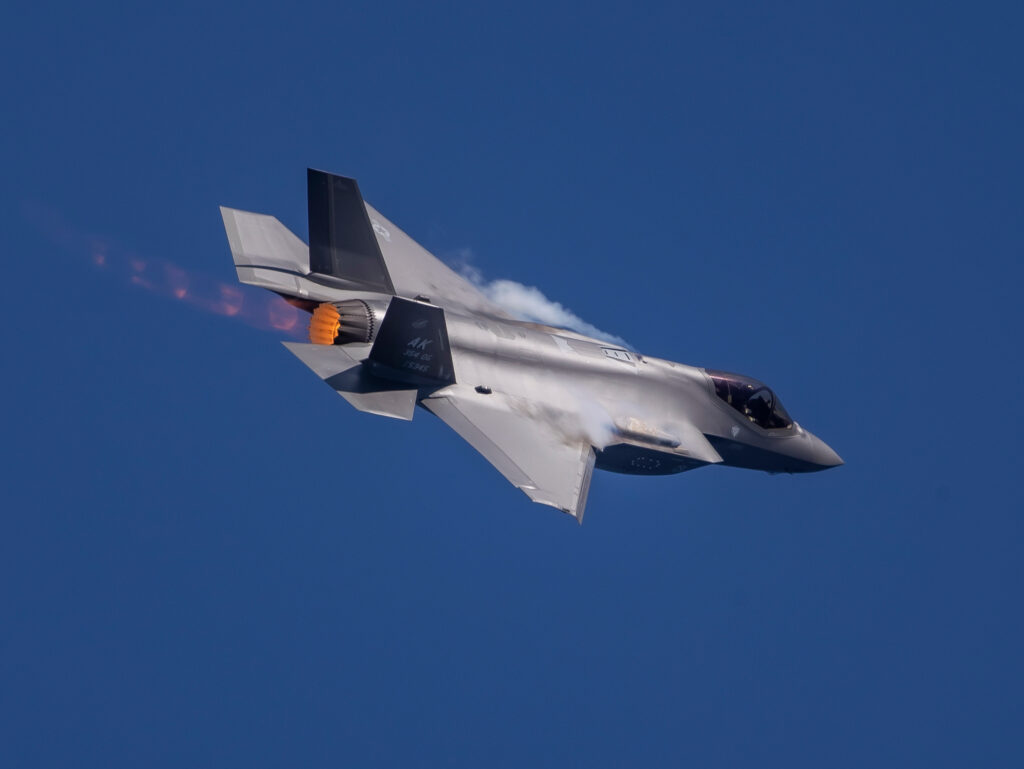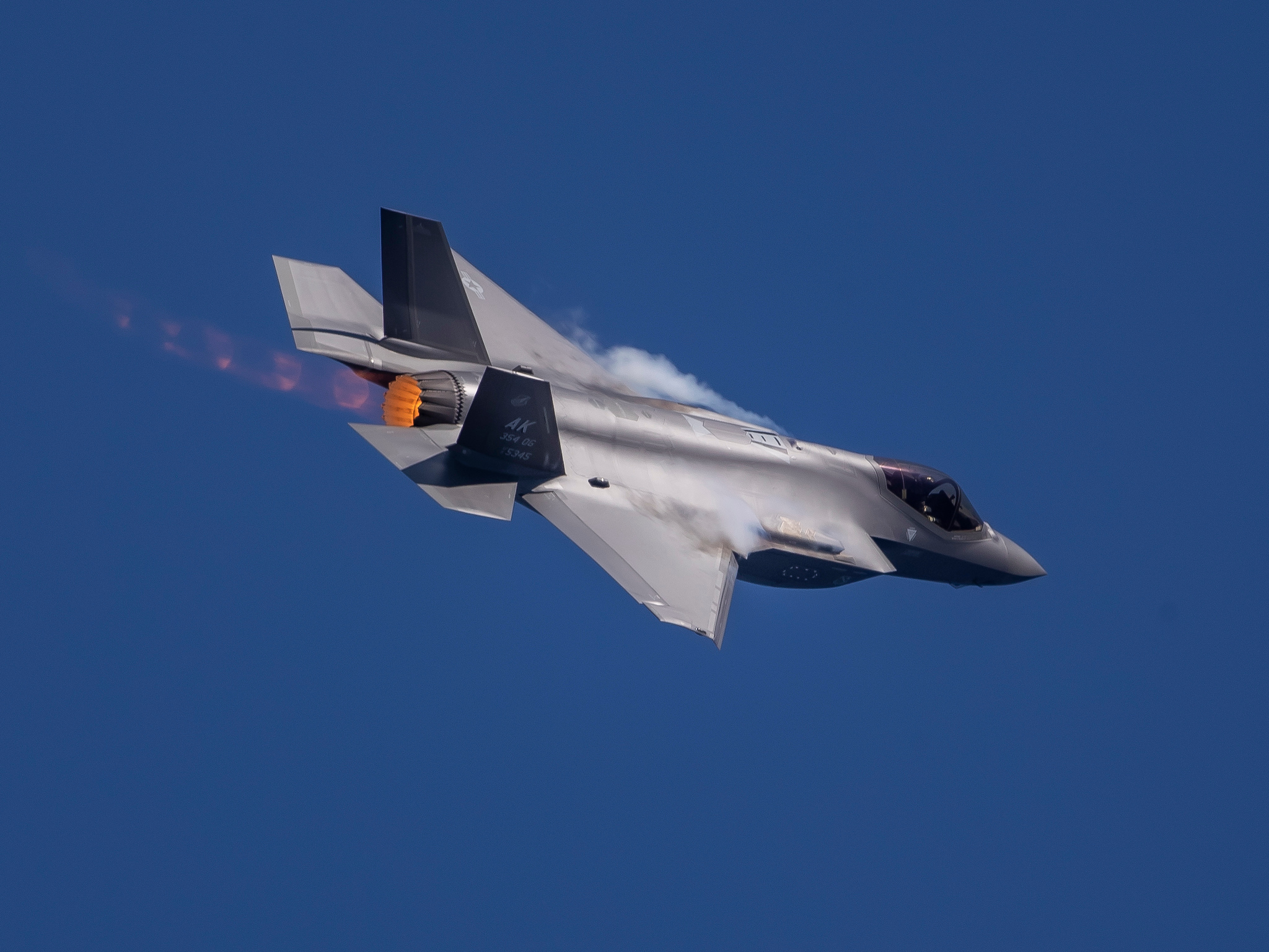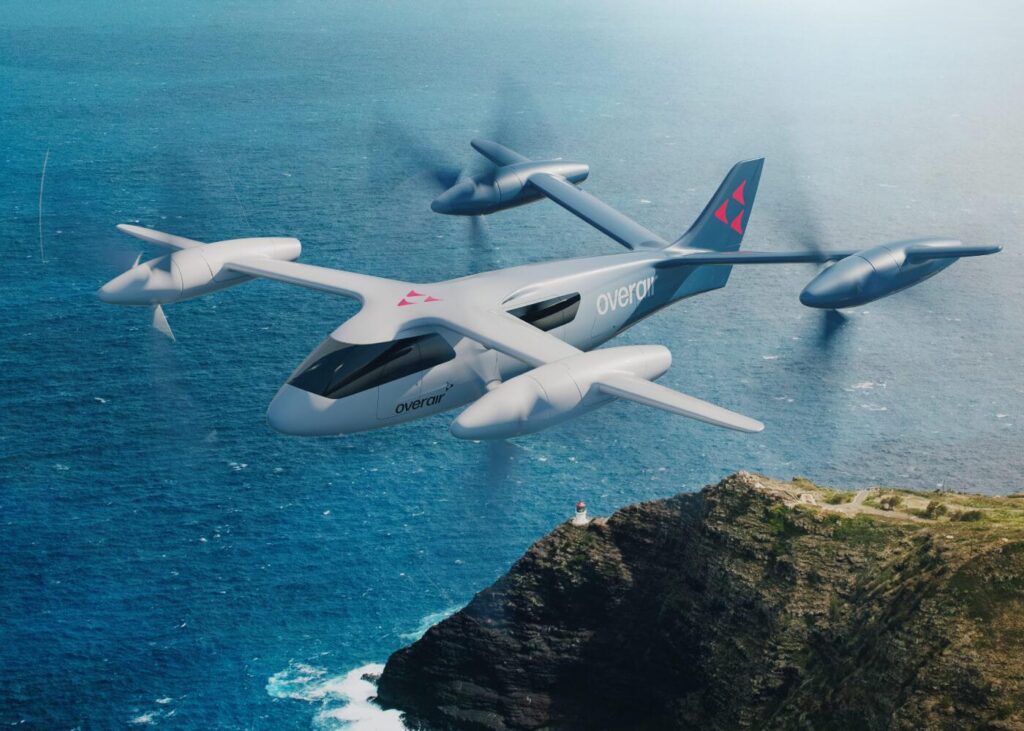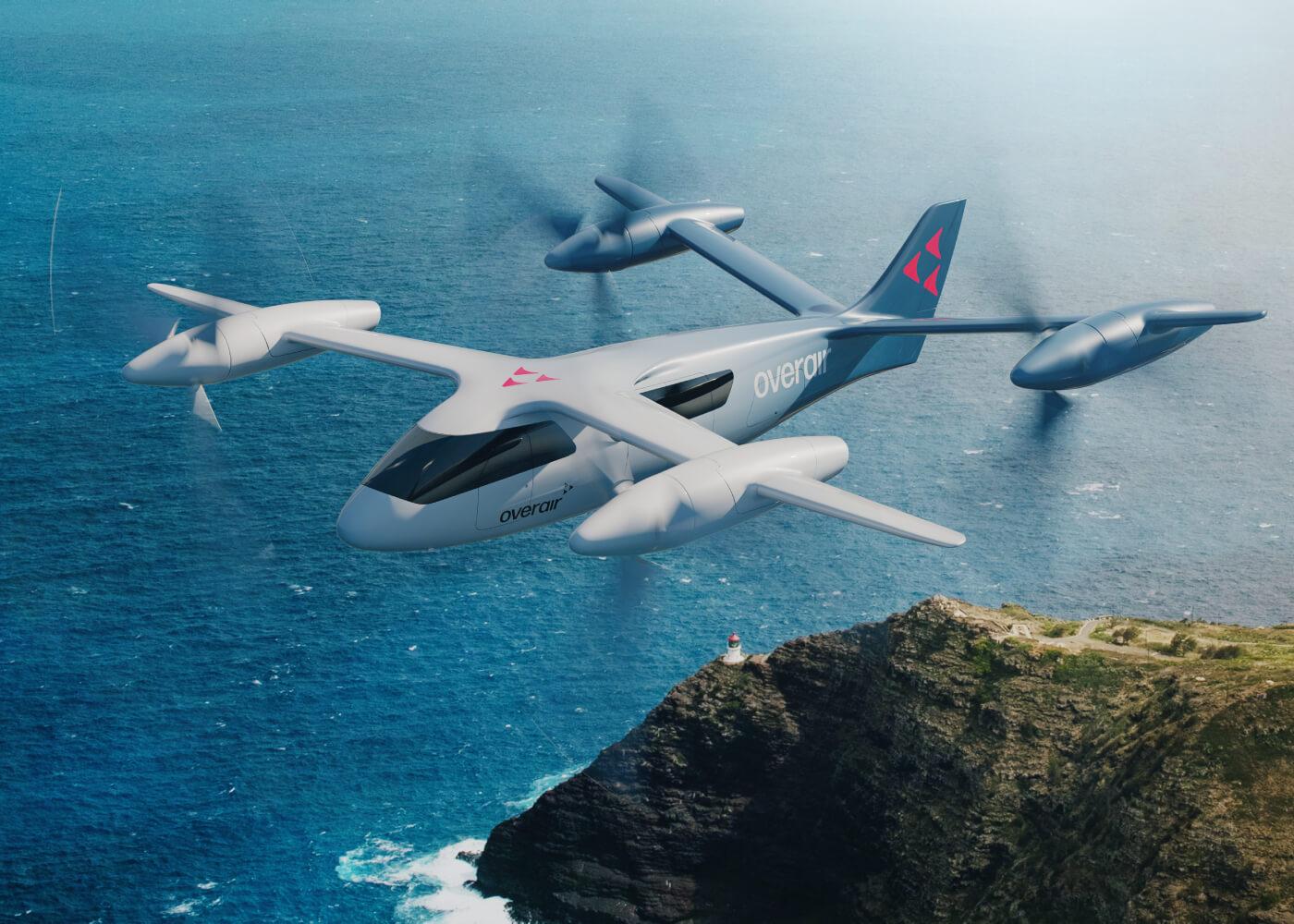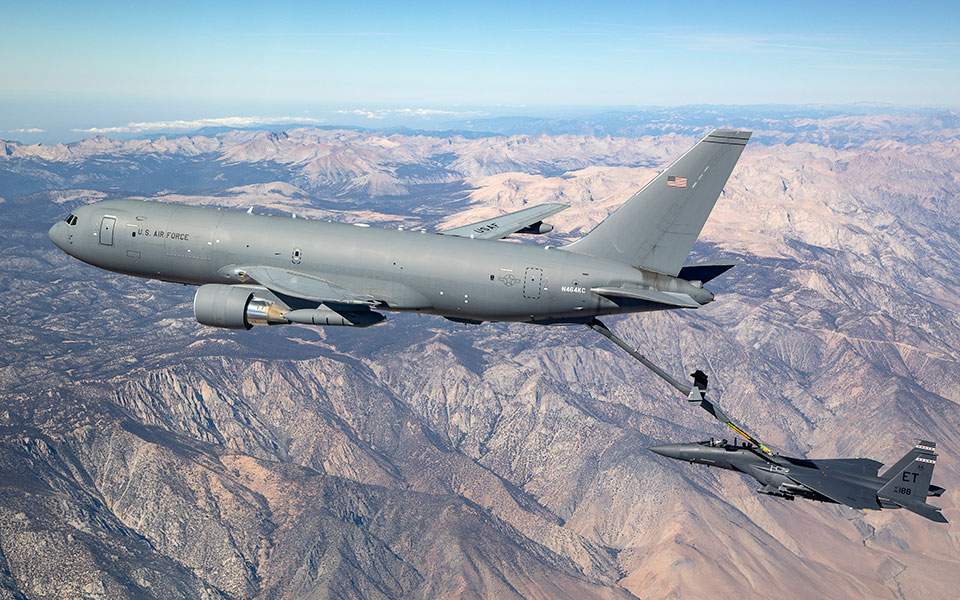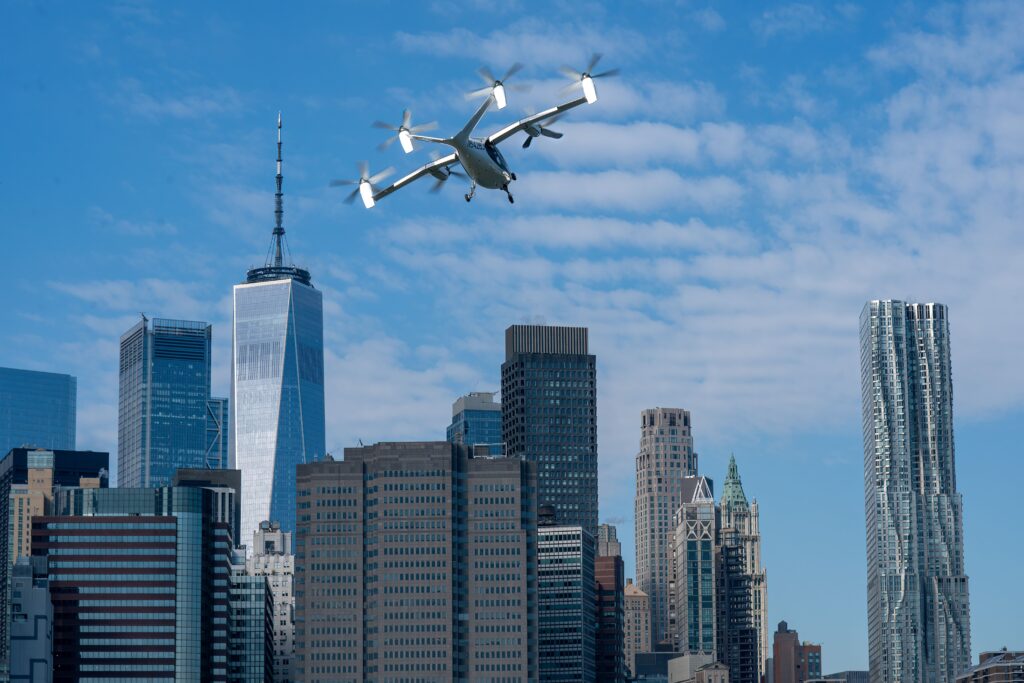
Joby Aviation, a company developing electric vertical take-off and landing (eVTOL) aircraft for commercial passenger service has signed a definitive agreement with Helo Holdings to install the first air taxi charger in the greater New York City region at the company’s heliport in Kearny, N.J., located just a two-minute flight from Manhattan.
The agreement, which provides Joby with an operational base for its electric air taxi in the NYC region, builds on the partnership already established between Joby and HHI in November 2023, when Kearny served as a temporary home base for Joby’s aircraft.
Joby completed several flights at Kearny in preparation for the Company’s exhibition flight in New York City at an event hosted by the New York City Economic Development Corporation and Mayor Eric Adams. The city has committed to electrify the Downtown Manhattan Heliport to enable electric air taxi operations.
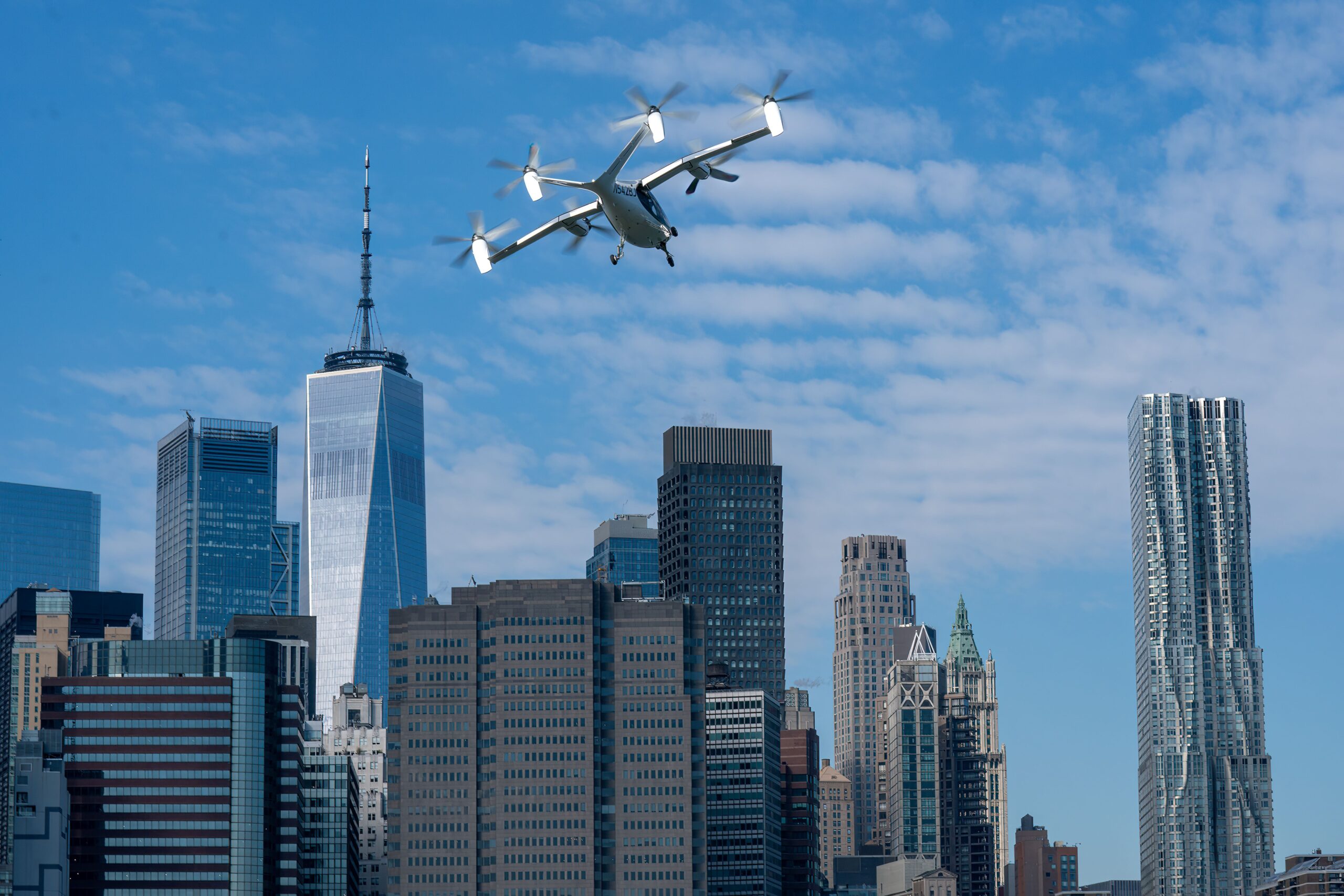
Joby’s eVTOL prototype flies over Manhattan in 2023. Joby photo
First opened in 2011, the Kearny heliport is the largest vertical-lift facility on the East Coast with 27 parking spots for helicopters and plans to expand to 32. The heliport provides ground services as well as hangar space for maintenance operations to helicopter operators in the New York region, one of the busiest low-altitude corridors in the world.
As part of the agreement, HHI will upgrade its electrical infrastructure to support the installation of Joby’s Global Electric Aviation Charging System (GEACS), designed to support the safe and efficient operation of all-electric aircraft under development today, including Joby’s quiet, emissions-free air taxi.
“We’re pleased to expand our partnership with HHI as we prepare to install our GEACS charging system at Kearny Heliport,” said JoeBen Bevirt, founder and CEO of Joby. “Kearny is expected to become the first heliport with an air taxi charger in the tri-state area and enable the launch of our quiet, emissions-free air taxi service in the greater New York City region.”
The GEACS charging interface is already used at Joby’s flight test center in Marina, Calif., and at Edwards Air Force Base. Joby recently announced a definitive agreement with Clay Lacy Aviation to install a charging system at John Wayne Airport (SNA) in Orange County, Calif.
“We continue to expand our footprint in Kearny in support of one of the busiest low-altitude corridors in the world, and we’re thrilled to partner with Joby, one of the leading developers of electric air taxis, to bring the next wave of quiet aircraft to residents of the tri-state area,” said Jeff Hyman, founder and CEO of HHI.
In 2022, Joby announced a multi-year, multi-city commercial and operational partnership with Delta Air Lines to deliver seamless airport trips for its customers across several locations, including Los Angeles and New York City.
Joby’s air taxi is designed to carry a pilot and four passengers at speeds of up to 200 mph, offering high-speed mobility with a fraction of the noise produced by helicopters and no in-flight emissions.
Joby also is is collaborating with Atlantic Aviation, a leading provider of aviation services and infrastructure, to electrify existing aviation infrastructure in New York and Southern California.
The two companies will undertake a comprehensive analysis of how Joby’s air taxi can operate at these locations alongside traditional aircraft and other electric aircraft, offering customers a new way to move from point to point in congested cities that is quieter and more sustainable.
Atlantic has an extensive operational footprint in major cities across the United States, including numerous sites in the New York City and Los Angeles metropolitan areas.
“Our collaboration with Joby is a key step in Atlantic’s push to bring existing aviation infrastructure into the future and solidify Atlantic’s leading role in supporting the growth of electric aviation,” said John Redcay, chief commercial and sustainability officer at Atlantic. “We will be a technology-agnostic supporter of advanced air mobility and our work with Joby is a key part of that journey.”
The post Joby to Install First Electric Air Taxi Charger in Greater New York City Region appeared first on Avionics International.
—————
Boost Internet Speed–
Free Business Hosting–
Free Email Account–
Dropcatch–
Free Secure Email–
Secure Email–
Cheap VOIP Calls–
Free Hosting–
Boost Inflight Wifi–
Premium Domains–
Free Domains






